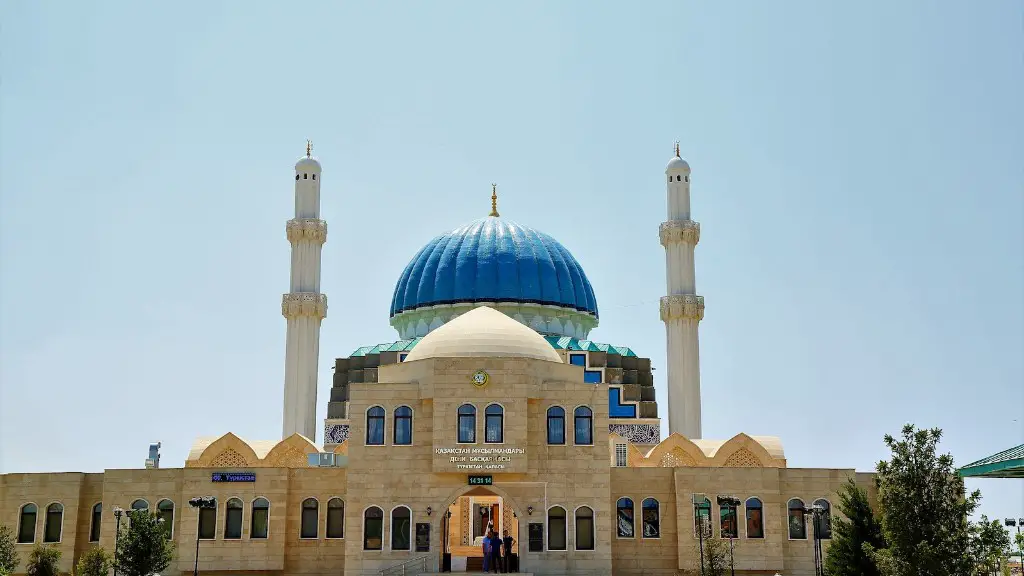What Does Hinduism Worship Look Like?
Hinduism is the world’s oldest major religion and follows a polytheistic doctrine. Hindus typically worship multiple deities and holy figures in a variety of forms. Worship of such figures, or “puja”, is the primary ritualistic practice of the Hindu faith. Worship can take different forms depending upon the sect that is being followed. While many modern Hindu traditions focus on divine images and abstract representations of gods, there are also some ancient practices that remain in use.
Hindu Gods
Hindus worship multiple gods and goddesses, who represent different aspects of Brahman, the one supreme God. Brahman is believed to be the all-encompassing, eternal force that binds all of existence. The most prominent gods are Vishnu, Shiva, and Shakti. Hindus also venerate various avatars of each god, such as Krishna and Rama for Vishnu, Ganesha and Hanuman for Shiva, and Kali and Durga for Shakti. Hindus believe that these gods are present in points in space and time, or “murtis”, and thus worship them as present figures.
Puja Rituals
The practice of puja for each of the major gods has some common elements, but specific rituals and rituals vary. Generally, Hindus begin worship by ringing a bell and folding hands in a prayerful and meditative posture. Puja often includes cleaning and decorating an altar and offering of food, flowers, and incense. Prayers are chanted in Sanskrit, a religious language, and a series of specific mantras are repeated three times. After the puja ends, the offerings are shared among devotees.
Temple Worship
Temple worship is a major form of Hindu practice and takes place in both public temples and domestic shrines. Traditional temples feature elaborate architecture in which multiple statues of gods are placed. All temples are highly decorated and offer reverential worship. Most temples also have a fire altar and decorated ritual rooms with elaborate offerings and prayers.
Domestic Worship
Despite the presence of public temples, many Hindus engage in personal worship at home. Household shrines usually contain photographs or other representations of deities. Hindus bring offerings in the form of flowers, food, incense, and oil lamps to these shrines in their homes.
Devotional Practices
Devotional practices to Hindu gods involve rites and customs such as singing devotional songs, visiting temples, offering flowers, lighting lamps, and taking part in festivals. Hindus believe that prayers to the gods and goddesses will bring them favours and blessings. Popular devotional activities include yoga, meditation, chanting of holy names, pujas, and recitation of mantras.
Nature Worship
Hindu culture also includes worshipping nature, as many gods and goddesses are connected to aspects of the natural world. Hindus traditionally worship rivers, animals, trees, and other elements of the environment. This includes offerings to vital natural sites, such as a forest or the top of a mountain.
Ancestral Worship
Ancestral worship, also known as Shraadh, is an important ritual for many Hindu families. Hindus believe that the souls of their deceased ancestors are present in the universe and should be honoured and remembered. This is done by offering food, flowers, and other offerings to the ancestors.
Animal Worship
Hinduism also includes the worship of animals, particularly cows, which are considered sacred in India. Hindus celebrate special festivals in honor of cows, and most temples have a permanent cow worshipping shrine. Hindus also revere snakes, monkeys, and birds, and offer prayers and mantras in their honor.
Symbols For Worship
The symbol of the Om (or Aum) is an important representation of the primal source and omnipresent brahman. Hindus believe that the divine vibrations of Om provide union with the divine and open up pathways to liberation. The syllable appears in many religious texts and is commonly chanted during meditation and puja rituals.
Worship Through Art
Hindus use a variety of art forms to express their devotion and veneration of their gods and goddesses. These include painting, sculpture, dance, and theater. Hindus invite their deities to take part in their artistic expressions as a way of embodying them in daily life. Art is also used as a way to visually represent the divine figures, and often includes stories, symbols, and metaphors to convey the essences of deities.
Worship Through Dance
Dance is an important form of worship and reverential practice that has been integral to Hindu culture for centuries. Many popular Hindu dance styles incorporate storytelling and religious symbolism, performed with gestures that reference gods and goddesses. These include Bharatanatyam, Kathakali, Odissi, and Kuchipudi. These Dance forms invoke feelings of deep connectedness with the divine, and are a way to physically express worship and reverence.
Worship Through Music
Music is also a form of worship in Hinduism, with a large collection of devotional songs known as bhajans. Hindus believe that the vibration of the music calls upon the gods and goddesses which elevates their soul and brings them closer to spiritual liberation. Music is also used to accompany dance forms, such as the Bhagavata Mela, and can be heard in temples and other sacred spaces.
Worship Through Sacrifice
Many Hindu rituals involve some form of offering or sacrifice to deities. These offerings can be of anything from food and flowers to money and clothing. The goal of these offerings is to bring about divine favor and blessings, and the the practice is often combined with chanting, bhajans, or other devotional activities.
